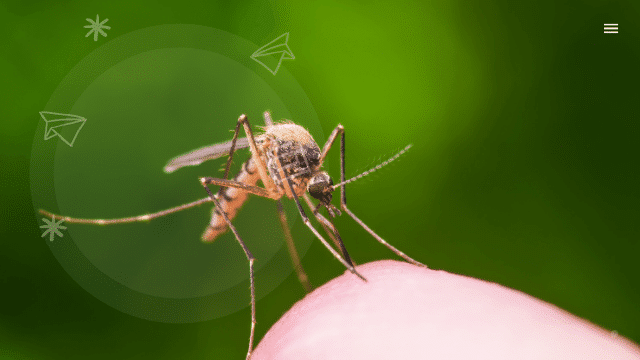Topic Content:
- Text: Life History of a Mosquito
- Title: New English concept by F. Ademola et al. pages 18 – 19.

Life History of a Mosquito:
Egg-laying
The mosquito has a life-cycle which resembles that of a housefly. The female mosquito lays her eggs in stagnant waiter such a swamps, pools, ponds, blocked drains or water in cans and barrels. The Anopheles mosquito lays eggs singly. Each Anopheles egg is boat-shaped with an air-float which keeps the egg afloat. The eggs of the Culex mosquito stick together to form a raft. Each Culex egg is less than 1mm long and hatches into the larva between one and two days after it is laid.
Larva
The larva, which emerges after a few days, is very active. The larva has a comparatively large head, a thorax of three fused segments, and nine distinct abdominal segments. The head of the larva bears a pair of very short antennae, a pair of eyes, jaws, and two small brushes which help to draw particles of food towards the mouth. The mosquito larva, though aquatic, obtains oxygen from the atmosphere through the breathing tube and spiracles located on the last but one abdominal segment. The mosquito larva moults four times and changes into a pupa after about ten days.
Pupa
The pupa, like the larva, is very active. It has a large anterior end made up of the head and thorax called the cephalothorax. The entire body of the pupa is curved like a comma. Like the larva, the pupa is aquatic but uses atmospheric oxygen. The pupa has a pair of spiracles on the dorsal surface of the head. The spiracles reach up to the water surface as breathing trumpets. The pupa does not feed. In less than one week, the imago appears.
Imago
The pupal skin splits along the back to release the adult mosquito. The whole process of releasing the imago takes only a few minutes.
Economic importance of the mosquito
Mosquitoes transmit disease-causing organisms such as the malaria parasite. They also pollinate flowers when feeding on the nectar of the flowers.
Summary of the Passage:
The stages of mosquitoes and their life cycle
Evaluation:
Answer questions 1-7 pages 18 – 19.
Reading Assignment: Contemporary English grammar page 23 by Murthy. J.D.
Reference: New English concept by F. Ademola et al.



Responses